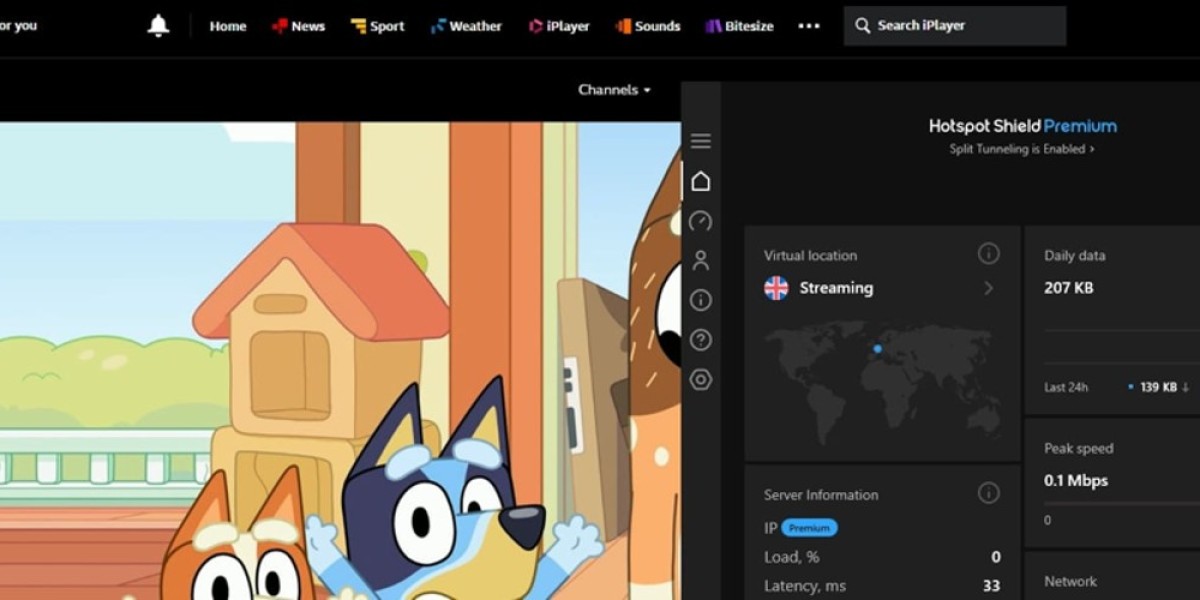Dubai has emerged as a global leader in futuristic urban planning — a city that thrives on innovation, sustainability, and connectivity. Its skyline tells a story of architectural brilliance, but beneath the glass and steel lies something even more powerful: intelligent software driving smart building ecosystems.
At the heart of this transformation is IoT (Internet of Things) technology — a digital nervous system connecting devices, infrastructure, and people. By embedding sensors and data intelligence into every component of a building, IoT is revolutionizing how Dubai manages energy, comfort, and safety. This integration is not just about automation; it’s about creating sustainable, responsive, and efficient environments aligned with Dubai’s Smart City vision.
The Rise of Smart Buildings in Dubai
Dubai’s ambition to become one of the world’s smartest cities has led to the development of numerous connected infrastructure projects. From Burj Khalifa’s energy optimization systems to Expo City’s sustainability-driven design, IoT has become the foundation of urban progress.
Smart buildings integrate IoT devices to monitor and manage everything — lighting, temperature, air quality, occupancy, water usage, and even elevator traffic. By analyzing real-time data, these systems enable buildings to self-regulate, reduce energy waste, and enhance user comfort.
With global energy consumption rising and sustainability becoming a top policy priority, Dubai’s government has established smart building regulations under the Dubai Electricity and Water Authority (DEWA) and the Smart Dubai initiative, which mandate IoT integration in commercial and residential developments.
The city’s vision is clear: every building must think, respond, and evolve — and software is the key enabler.
How IoT Software Powers Smart Buildings
Real-Time Monitoring and Data Insights
IoT software enables building systems to communicate seamlessly. Sensors continuously collect data on temperature, humidity, air quality, and occupancy. Software analytics platforms process this data to adjust systems automatically — for instance, reducing air conditioning in unoccupied rooms or dimming lights during daylight hours.
This level of automation not only reduces operational costs but also contributes to sustainability goals by minimizing energy waste. In a city like Dubai, where cooling alone accounts for nearly 70% of building energy consumption, intelligent energy management is both an economic and environmental necessity.
Predictive Maintenance and Asset Efficiency
IoT-based predictive maintenance is transforming facility management in Dubai’s commercial towers and residential complexes. Sensors detect anomalies in HVAC units, elevators, and water systems, alerting maintenance teams before breakdowns occur. This proactive approach minimizes downtime, extends equipment life, and reduces maintenance costs.
By leveraging data analytics, property managers can plan maintenance schedules based on actual equipment performance rather than fixed time intervals — saving both time and resources.
Energy Optimization and Carbon Reduction
Smart energy platforms powered by IoT software continuously optimize building performance. They integrate with Dubai’s renewable power grid and use AI algorithms to balance demand with energy availability.
For example, during peak daylight, solar-integrated buildings can feed surplus energy back to the grid. In contrast, during low-supply periods, software adjusts systems to minimize consumption. This two-way communication supports Dubai’s clean energy strategy to derive 75% of its power from renewable sources by 2050.
Security and Safety Systems
IoT solutions also strengthen building safety. Real-time surveillance, biometric access control, and AI-based anomaly detection create a secure environment for occupants. Smoke detectors, water leak sensors, and motion detectors communicate with central systems, enabling immediate response in emergencies.
In Dubai’s luxury real estate sector, integrated security systems have become a major differentiator — offering residents peace of mind while maintaining aesthetic and operational elegance.
User Experience and Personalization
IoT software personalizes comfort for each occupant. Smart thermostats adjust temperatures based on user preferences, lighting adapts to mood, and voice-controlled assistants enable seamless interaction with building systems.
In Dubai’s hospitality industry, such personalized automation enhances guest satisfaction while cutting operational costs. Hotels now deploy IoT platforms that remember guest preferences and automatically configure rooms for future visits — combining luxury with efficiency.
IoT Architecture in Smart Building Projects
Every smart building ecosystem rests on a robust architecture that connects the physical and digital worlds.
Sensor Layer: Comprises devices that capture environmental, mechanical, and occupancy data — such as temperature sensors, cameras, and humidity monitors.
Network Layer: Transmits data through secure protocols like Wi-Fi, Zigbee, LoRaWAN, or 5G, depending on the building’s infrastructure.
Cloud/Edge Layer: Processes data either locally (edge computing) for instant responses or in the cloud for advanced analytics and long-term insights.
Application Layer: The software interface where users and administrators monitor, control, and analyze system performance.
The true intelligence of this architecture lies in the IoT software layer, which integrates all components into a unified ecosystem capable of decision-making, automation, and predictive intelligence.
Why Custom IoT Software Is Essential for Dubai
While off-the-shelf platforms exist, Dubai’s diverse architectural landscape demands customized IoT software tailored to specific building needs. Each development — from a beachfront villa to a 70-story skyscraper — operates under unique parameters of energy load, climate impact, and occupancy behavior.
Custom IoT solutions enable:
Seamless integration with existing Building Management Systems (BMS) and renewable power grids.
Localized adaptability for the UAE’s climate, which requires specialized cooling and insulation controls.
Advanced analytics that reflect Dubai’s smart city KPIs such as energy intensity, water conservation, and carbon neutrality.
Compliance with regional standards, including DEWA’s Smart Grid and Dubai Municipality’s Green Building Regulations.
By adopting bespoke IoT software, developers can ensure that smart buildings align perfectly with both sustainability targets and occupant expectations.
Organizations leading this transformation often collaborate with a custom application development company experienced in building intelligent IoT ecosystems that merge design, automation, and analytics into a single digital fabric.
Challenges in IoT Software Development for Smart Buildings
Integration with Legacy Infrastructure
Many existing structures in Dubai were not built with IoT in mind. Retrofitting older buildings requires integrating modern sensors and control systems into outdated frameworks — often a complex engineering challenge.
Data Privacy and Cybersecurity
With thousands of connected devices transmitting sensitive data, cybersecurity is critical. Developers must implement encrypted communication channels, access control mechanisms, and real-time threat detection systems to ensure user and system safety.
Scalability and Interoperability
As buildings become smarter, scalability becomes essential. IoT systems must handle growing data volumes and adapt to new technologies without disrupting operations. Interoperability between devices from different manufacturers is another key consideration.
Cost and ROI Assessment
While IoT implementation involves upfront costs, the long-term savings from energy efficiency, predictive maintenance, and automation deliver substantial ROI. The challenge lies in communicating these long-term benefits to investors and stakeholders.
IoT Software and Dubai’s Sustainability Goals
Dubai’s Smart City Initiative and Dubai Clean Energy Strategy 2050 outline a vision where technology ensures both progress and sustainability. IoT-driven smart buildings play a central role in achieving this mission.
The UAE government has already mandated green building codes that promote the use of energy-efficient technologies, water conservation systems, and waste management automation. By linking IoT systems with renewable energy sources and AI-driven analytics, Dubai is setting global benchmarks for sustainable architecture.
IoT software also supports ESG (Environmental, Social, and Governance) reporting by providing transparent, data-backed insights into energy use, emissions, and sustainability metrics — essential for real estate developers and corporate tenants aiming for global certification standards like LEED or Estidama.
The Future of IoT in Dubai’s Smart Buildings
The next generation of smart buildings in Dubai will not just react — they will anticipate. Predictive AI will forecast energy demand based on occupancy trends, weather, and grid conditions. Machine learning models will continuously fine-tune system performance, ensuring optimal balance between comfort and conservation.
Moreover, the convergence of 5G connectivity, edge computing, and blockchain-based data verification will enhance IoT capabilities, enabling ultra-fast communication, real-time analytics, and tamper-proof sustainability tracking.
Dubai is already experimenting with digital twin technology — creating virtual replicas of buildings that simulate and optimize performance before construction even begins. This integration of IoT, AI, and simulation will redefine smart construction for decades to come.
Benefits of IoT Software in Smart Building Projects
Energy Efficiency: Intelligent monitoring reduces wastage and optimizes consumption.
Operational Cost Reduction: Predictive maintenance and automation lower ongoing expenses.
Enhanced Comfort: Personalized settings create ideal environments for occupants.
Sustainability Compliance: Meets Dubai’s strict green building regulations.
Data-Driven Decisions: Real-time insights improve strategic facility management.
Scalable Ecosystem: Systems evolve seamlessly with future technologies.
Best Practices for Successful IoT Software Implementation
Define Clear Objectives: Establish measurable sustainability and operational goals.
Adopt an Open Architecture: Ensure interoperability between different IoT devices.
Prioritize Security: Implement strong encryption, authentication, and monitoring protocols.
Leverage AI and Analytics: Use predictive insights for proactive energy and asset management.
Choose the Right Development Partner: Collaborate with experts familiar with both IoT and Dubai’s regulatory frameworks.
Pilot Before Scale: Start with small deployments to test system performance and integration.
Conclusion
Dubai’s journey toward becoming a fully connected smart city is fueled by intelligent technology — and at the heart of that technology lies IoT software. From skyscrapers that breathe efficiency to communities that self-regulate energy and comfort, IoT-driven smart buildings are the foundation of sustainable urban living.
By combining engineering excellence with digital intelligence, Dubai is not only redefining architecture but also shaping a global blueprint for sustainable development. The city’s vision of intelligent infrastructure powered by software is a testament to how technology can transform buildings into living, learning, and evolving ecosystems.
FAQs
What is IoT software development in smart buildings?
It involves designing and developing applications that connect and manage smart devices within buildings to monitor energy, comfort, and safety through real-time data analytics.
How do smart buildings in Dubai use IoT?
Smart buildings in Dubai use IoT for automated lighting, HVAC control, predictive maintenance, security management, and energy optimization aligned with the city’s sustainability goals.
What are the main challenges of IoT integration in buildings?
Key challenges include cybersecurity, system interoperability, data management, and integration with existing infrastructure.
How does IoT support Dubai’s sustainability strategy?
IoT reduces energy consumption, enables renewable energy integration, and ensures compliance with Dubai’s green building and clean energy policies.
Why is custom IoT software preferred over ready-made solutions?
Custom software aligns perfectly with the building’s unique infrastructure, environmental needs, and regional regulations, ensuring better efficiency, scalability, and long-term performance.







